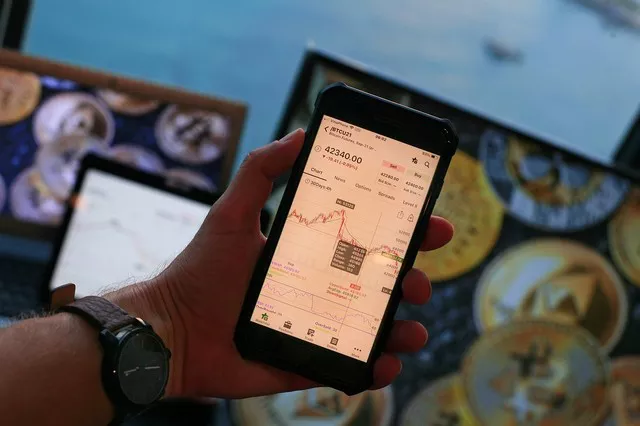Trading in the financial markets requires a nuanced understanding of various instruments, and Eurodollar futures stand out as a key player in the realm of interest rate derivatives. As we embark on the journey to unravel the intricacies of trading, this comprehensive guide will provide a detailed exploration of Eurodollar futures.
Understanding Eurodollar Futures
At its core, Eurodollar futures are financial derivatives that derive their value from the interest rates on U.S. dollars deposited in overseas banks. Contrary to what the name might suggest, Eurodollar futures have no direct connection to the Euro currency but are instead based on U.S. dollar deposits held outside of the United States. Traded on the Chicago Mercantile Exchange (CME), these futures contracts provide a way for market participants to hedge against or speculate on changes in short-term interest rates.
Contract Specifications and Terminology
Before delving into the mechanics of trading Eurodollar futures, it is crucial to grasp the contract specifications and associated terminology. Each Eurodollar futures contract represents a specific three-month interest rate, commonly referred to as the “contract expiration.” Traders often encounter terms such as LIBOR (London Interbank Offered Rate) and IMM dates (International Monetary Market dates), which play pivotal roles in determining the pricing and settlement of Eurodollar futures contracts.
Risk Management and Margin Requirements
As with any financial instrument, risk management is paramount when trading Eurodollar futures. Traders must be acutely aware of potential risks and employ strategies to mitigate them. Understanding margin requirements is a fundamental aspect of risk management. Eurodollar futures contracts typically have lower margin requirements compared to other futures contracts, making them an attractive option for traders seeking exposure to interest rate movements with a relatively smaller capital outlay.
Trading Strategies for Eurodollar Futures
Developing effective trading strategies is essential for success in the dynamic world of Eurodollar futures. One common strategy is the use of spread trades, where traders capitalize on the price differentials between different contract expirations. Additionally, yield curve strategies involve taking positions based on anticipated movements in the yield curve, taking advantage of changes in the shape and slope of the curve over time. Trend-following strategies and mean reversion strategies are also commonly employed by Eurodollar futures traders.
Market Analysis and Fundamental Factors
To make informed trading decisions in the Eurodollar futures market, a thorough understanding of market analysis is indispensable. Traders must stay abreast of economic indicators, central bank policies, and geopolitical events that can impact short-term interest rates. The Federal Reserve’s decisions and statements, employment reports, and inflation data are among the critical factors that can influence the pricing of Eurodollar futures contracts.
Technological Tools and Trading Platforms
In the contemporary landscape of financial markets, technology plays a pivotal role in trading efficiency. Utilizing advanced trading platforms and analytical tools can provide traders with a competitive edge. Real-time data feeds, charting tools, and algorithmic trading capabilities are essential components for those looking to navigate the fast-paced environment of Eurodollar futures trading. It is crucial for traders to stay technologically proficient and adapt to the evolving landscape of financial technology.
Hedging with Eurodollar Futures
One of the primary purposes of Eurodollar futures is to serve as a hedging tool for market participants exposed to interest rate risk. Banks, corporations, and other financial institutions often use these futures contracts to manage the impact of interest rate fluctuations on their portfolios. By taking offsetting positions in Eurodollar futures, entities can protect themselves against adverse movements in short-term interest rates, thereby mitigating potential financial losses.
Understanding Contract Rollover and Settlement
Traders in Eurodollar futures must be cognizant of the contract rollover process and settlement mechanisms. As the expiration date of a futures contract approaches, traders can either close their positions, roll them over to a later expiration date, or allow them to settle. Understanding the implications of each choice is crucial, as it directly impacts the trader’s exposure to interest rate movements and potential gains or losses.
Compliance and Regulatory Considerations
Engaging in Eurodollar futures trading necessitates adherence to regulatory guidelines and compliance with relevant authorities. Traders must be well-versed in the rules and regulations set forth by the Commodity Futures Trading Commission (CFTC) and the National Futures Association (NFA). Staying informed about compliance requirements ensures a smooth and legally sound trading experience in the Eurodollar futures market.
Educational Resources and Continuous Learning
Mastering the art of trading Eurodollar futures is an ongoing process that requires dedication to continuous learning. Traders should leverage educational resources provided by reputable institutions, financial news outlets, and industry experts. Webinars, seminars, and online courses can offer valuable insights into advanced trading strategies, market dynamics, and risk management practices specific to Eurodollar futures.
Conclusion
Trading Eurodollar futures requires a multifaceted approach that encompasses a deep understanding of financial markets, risk management principles, and effective trading strategies. Whether you are a novice trader seeking to understand the basics or a seasoned professional looking to refine your skills, this comprehensive guide has provided insights into the nuances of Eurodollar futures trading. By combining theoretical knowledge with practical strategies, traders can navigate the complexities of interest rate derivatives with confidence, ultimately optimizing their trading performance in the dynamic world of financial markets.


